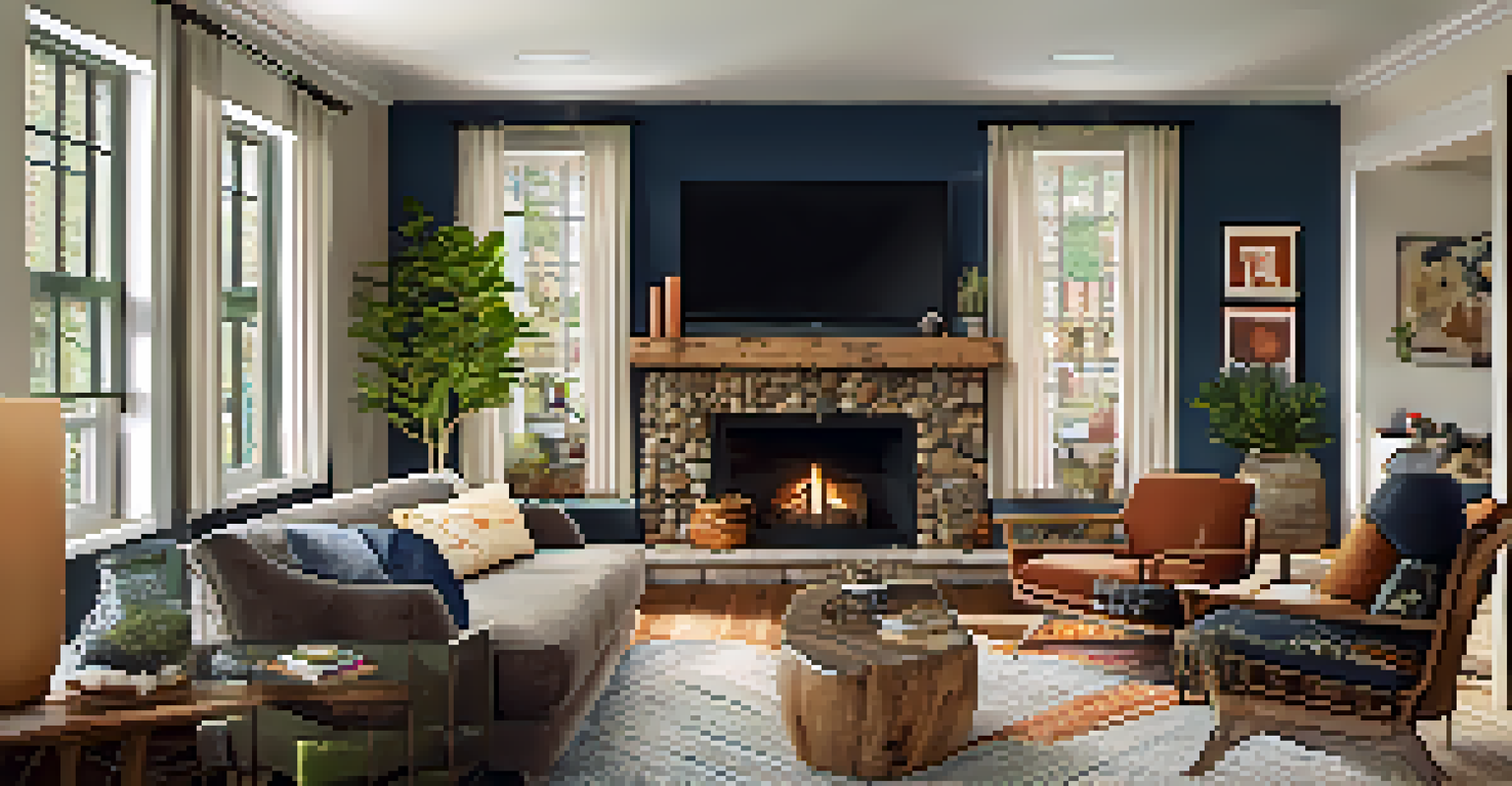Not Being Flexible with Renovation Plans

Understanding the Importance of Flexibility in Renovations
Flexibility during renovations can make a significant difference in the outcome of your project. Being open to changes allows you to adapt to unexpected challenges, such as structural issues or budget constraints. It’s like sailing a boat; if the wind shifts, you can adjust your sails instead of stubbornly sticking to a failing course.
The only thing that is constant is change.
When you commit to a rigid plan, you may overlook better alternatives that emerge during the renovation process. For example, you might discover a more efficient layout while demolishing walls, but if you're tied to your original vision, you might miss out on creating a more functional space.
Ultimately, embracing flexibility can lead to a more satisfying renovation experience. It enables you to enhance your home in ways you hadn’t considered initially, often resulting in a space that truly reflects your needs and lifestyle.
The Risks of Sticking Too Rigidly to Your Original Vision
One of the biggest risks of having inflexible renovation plans is the potential for costly mistakes. If you insist on maintaining your original design despite revealing issues, you may end up spending more to fix problems that could have been avoided with a more adaptable approach.

Additionally, a strict adherence to your plan can lead to frustration. Homeowners often feel overwhelmed when their expectations clash with reality. For instance, insisting on a specific material that isn’t available can stall the project, causing delays and increased stress.
Flexibility Enhances Renovation Success
Being open to changes during renovations allows homeowners to adapt to unexpected challenges and discover better alternatives.
In the long run, this rigidity can impact your satisfaction with the renovation. Instead of enjoying the transformation of your space, you may find yourself fixated on what didn’t go according to plan, overshadowing the positive changes that have taken place.
How to Balance Planning and Flexibility
Finding the right balance between a well-thought-out plan and the ability to pivot is essential for a successful renovation. Start by establishing clear goals for your project, but remain open to new ideas as the work progresses. Think of it as having a roadmap; it guides you but doesn’t dictate every turn.
Life is what happens when you're busy making other plans.
One effective strategy is to set aside a contingency budget for unexpected expenses. This not only gives you financial flexibility but also empowers you to make changes without the stress of overspending. For example, if you discover a leak behind a wall, having that buffer allows you to address it immediately rather than delaying repairs.
Moreover, regular communication with your contractor can help maintain this balance. By discussing any potential changes early on, you can make informed decisions that enhance the project rather than derail it.
The Value of Feedback During the Renovation Process
Feedback is crucial during renovations, as it allows for adjustments based on real-time observations. Whether it’s from a contractor, designer, or even friends and family, external perspectives can shed light on issues you might not have considered. For example, a friend might suggest a different color scheme that could brighten up the space more than your original choice.
Being open to constructive criticism can lead to innovative solutions that enhance your project. Think of it as a collaborative effort; the more ideas you gather, the richer your renovation experience becomes. Every suggestion is an opportunity to refine your vision.
Rigid Plans Can Lead to Mistakes
Sticking too rigidly to an original design can result in costly mistakes and frustration when reality doesn't align with expectations.
Incorporating feedback doesn’t mean abandoning your original idea; it’s about enhancing it. With the right mindset, you can create a space that exceeds your expectations while still aligning with your initial goals.
Case Studies of Successful Flexible Renovations
Many homeowners have experienced the benefits of being flexible with their renovation plans. For instance, one couple initially aimed for a traditional kitchen but, after discussing options with their contractor, pivoted to a more open-concept layout. The change not only suited their lifestyle better but also increased the home’s value.
Another example is a family who had planned a simple bathroom renovation but discovered issues with plumbing that required a complete overhaul. By embracing the need for flexibility, they ended up with a spa-like retreat rather than just a fresh coat of paint and new fixtures.
These examples illustrate how flexibility can lead to surprising and delightful results. Rather than sticking rigidly to a plan, adapting to circumstances can result in a transformation that reflects your true vision.
Learning to Let Go of Perfectionism
Perfectionism can be a significant barrier to successful renovations. If you’re determined to have everything turn out exactly as planned, you may find yourself in a cycle of disappointment. Accepting that not everything will go according to a meticulous plan can be liberating, allowing for creativity and spontaneity.
Consider the process as a journey rather than a checklist of perfect outcomes. Embracing the imperfections might lead to unique design elements that set your space apart. For example, a slightly uneven countertop might bring a rustic charm that enhances the overall aesthetic.
Embrace Feedback for Better Outcomes
Incorporating feedback from others can lead to innovative solutions and enhance the overall renovation experience.
Ultimately, letting go of perfectionism opens the door to innovation. When you stop fixating on flaws, you can appreciate the beauty of a space that tells your story—one that evolves through the renovation process.
Conclusion: Embracing Change for a Successful Renovation
In conclusion, not being flexible with renovation plans can lead to a plethora of issues, from financial strain to unmet expectations. Embracing change and adapting to new information will not only enhance your project but also make the entire experience more enjoyable. It’s important to remember that renovations are often unpredictable, and that’s part of their charm.
By fostering an open mindset, you allow yourself to explore new ideas and solutions, leading to a space that is both functional and reflective of your personality. This adaptability can transform challenges into opportunities, creating a home that truly feels like yours.

So, as you embark on your renovation journey, keep in mind the value of flexibility. It can be your greatest ally, helping you navigate the twists and turns of the process while achieving a space you’ll love for years to come.